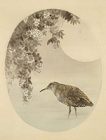Japanese Gallery (Honkan) Room 16
October 14, 2009 (Wed) - December 6, 2009 (Sun)
In 1872, the Ministry of Education held Japan's first domestic exhibition, the Yushima Seido Exposition, at the Yushima Seido Confucian shrine which survives today in the Ochanomizu area of Tokyo. This event marked the establishment of the institution which was to become the Tokyo National Museum.
The museum will welcome its 150th anniversary in 2022, and in view of this occasion presents an exhibition series which showcases the museum's history. As part of the series, this exhibition focuses on artworks and documents which tell of the museum's connection to the imperial household.
From 1886 to 1947, the Tokyo National Museum was managed by the Ministry of the Imperial Household; from 1900, it was officially named the Tokyo Imperial Household Museum, and museum operations were strongly connected to the Imperial Household.
When the Shosoin Repository was officially unsealed in 1872, the museum began to work together with the Imperial Household to restore and preserve the Shosoin antiquities. Publications such as the Ancient Imperial Textile Patterns catalogue introduced the Shosoin treasures, and in 1940 the works were transported to Tokyo where they were shown in the highly popular Shosoin Imperial Collection Exhibition. The Serpent Tales handscroll, on display in this gallery, depicts a long, snake-like queue of museum visitors trailing through Ueno Park on the occasion of the Shosoin exhibition.
Also on display are works produced by Artists to the Imperial Household, who were appointed under a system designed to patronize artists and promote the fine arts in Japan. Additional highlights include works related to the treasures donated by Horyuji temple to the Imperial Household, as well as documents relating to the architecture and decor of Meiji Palace (the pre-war imperial residence) and the Akasaka and Nijo Imperial Villas.

